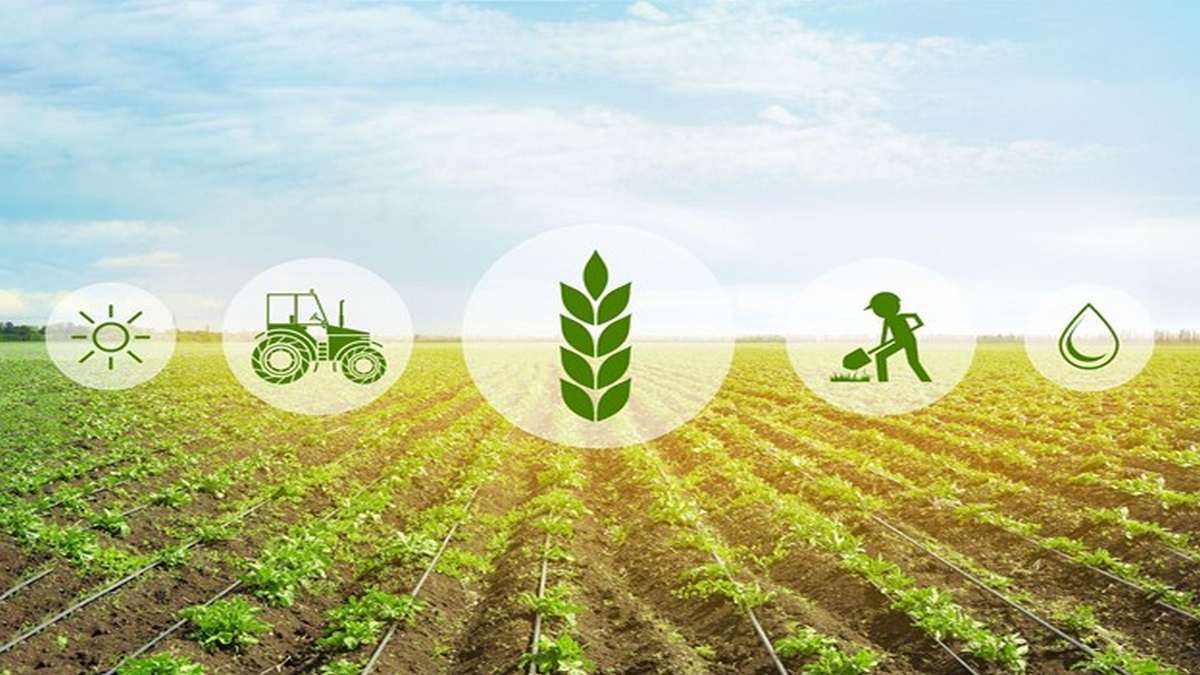Sustainable Crop Management Basics
Sustainable crop production is a type of production that involves reducing the influence of agriculture on the environment and biodiversity. Furthermore, this type of production allows supporting a stable level of food supply without increasing the use of chemicals, including pesticides and various fertilizers. It helps to avoid different issues, including fertilizer burn symptoms. It’s crucial to adhere to several rules and regulations to produce crops sustainably. These rules are related to soil conservation, environmental protection, food quality, etc. In this article, you can find information about the basic principles, practices, and benefits of sustainable crop production.

Main principles of sustainable crop growing
A range of essential principles guides sustainable crop growing:
- It’s impossible to grow rich and healthy yields without soil fertility. Farmers have to take good care of the earth, enriching it with compost, green manure, and other nutrients. Moreover, it’s crucial to conserve the microorganisms which live in the ground to support every natural process.
- Water is no less important than the soil, so sustainable farmers have to save water resources. It doesn’t mean that growers have to reduce watering; it means the effective use of this valuable resource.
- Sustainable crop production also involves pest and disease control with minimal pesticides, herbicides, and other chemicals. Farmers use different practices like crop rotation and select resilient crop varieties to combat the specified issues.
Soil management and fertilization
Healthy and fertile soil is crucial for high-quality products. Natural fertilizers work better for soil, human health, biodiversity, and environmental conservation. Organic and green manure, compost, and other natural components can help farmers grow good crops.
However, growers have to be careful with the application of any fertilizers. Lack of fertilizer usually leads to lower yields, which is not surprising for anyone. At the same time, over-fertilization also leads to negative consequences. For example, excessive fertilization can become a reason for fertilizer burn. You can define it by such signs as root rots, curling leaves of brown color, impaired growth, and so on.
The tillage method and the method of fertilizer application play a vital role in fertilizer effectiveness. Furthermore, it is essential for rational and thrifty use of resources. The plant root system should be capable of converting nutrients from fertilizers slowly and in a controlled manner. The soil needs to retain nitrogen so that this process occurs gradually and the substance does not enter the atmosphere.
If you’re looking for good fertilizers, then visit hans-chem.com.
Water management
Agriculture consumes about 70 percent of the world’s freshwater. Water management is critical today as future generations will also need this resource. Sustainable water management helps to conserve water and, at the same time, consume it in a more effective way. A sustainable approach includes constant monitoring of the irrigation system, water distribution control, pumps optimum performance maintaining, and water amount measuring.
It also would be great to consider weather conditions for more effective irrigation. For example, farmers have to avoid watering in windy conditions or irrigation in the middle of the day. Maintaining the soil’s water-holding capacity is also essential, especially if we talk about the hot season or regions in which drought is frequent. For example, you can use mulches for this purpose.
Pests and diseases control
Sustainable pest and disease management aims to meet the needs of present and future populations for health and environmental protection in agricultural production. This type of management includes several methods that involve saving resources and preserving them for future generations. At the same time, an essential part of this concept is to reduce the use of pesticides and other chemicals that pollute water sources, soil, and the environment in general.
Most Common Practices
Crop rotation
If you grow the same crops year after year and feed the soil with the same substances, the pests will adapt to these conditions and are difficult to get rid of. Crop rotation can help solve this problem, as farmers change the crops and fertilizers. Furthermore, this practice can positively influence the soil because it will not deplete.
Terraces
At first sight, not all the lands are suitable for agriculture. However, sustainable practices can help to create productive farms in different areas. Terraces are a way to grow crops in high-slope areas. Such a structure looks like a set of steps with wall supports.
Cover crops
Cover covers are an effective method of soil health maintenance. After the ripening season and before planting the main crops, the cover plants are not removed by the root but dug up, feeding the soil with them. This practice also helps prevent erosion. The plants like legumes can catch greenhouse gases, including nitrogen, harmful to the atmosphere, in the ground.
Low- or No-tillage farming
Farmers are increasingly using low or no-tillage practices. The main advantage of these methods is the capture of large quantities of greenhouse gases. Plowing the land can harm microorganisms and the natural processes in the soil. No-tillage farmingprevents soil compaction and provides the availability of oxygen and nutrients to the root system.
Conclusion
The described sustainable management and agricultural practices can improve the environment and increase production. In addition, the application of sustainable methods is accompanied by a reduction in the number of consumed resources. Consistent implementation of these practices can provide farmers with a stable yield and income.